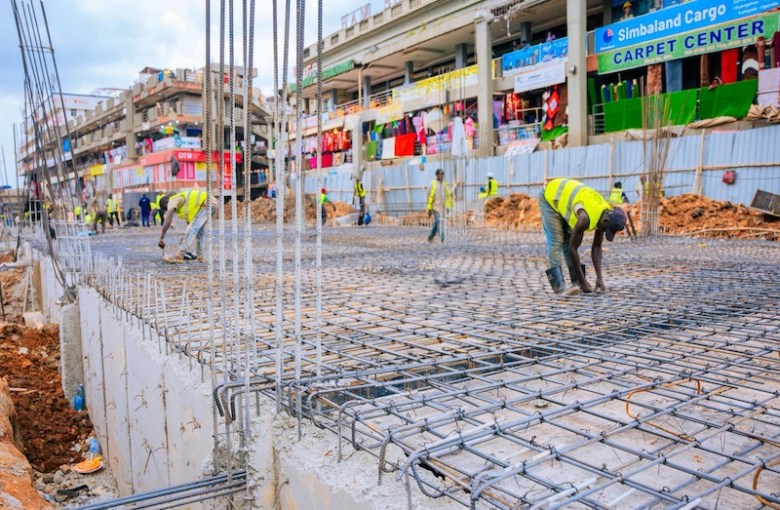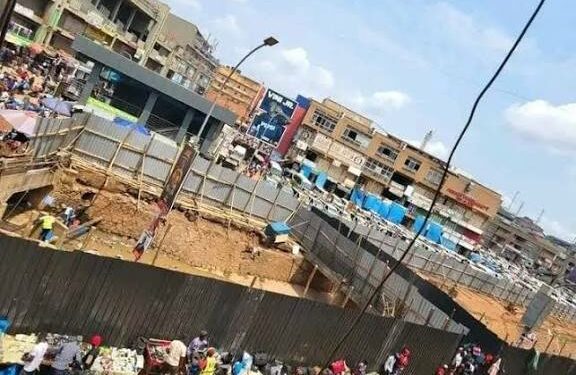Introduction
Nakivubo Channel’s redevelopment, spearheaded by businessman Hamis Kigundu with government endorsement, stands as one of Kampala’s boldest urban infrastructure projects in recent years. The channel, historically a critical drainage outlet for stormwater into Lake Victoria, had become a symbol of urban neglect, blocked by waste and causing frequent floods. Kigundu’s vision to modernize it into a functional, eco-friendly artery promised to revitalize downtown Kampala and mitigate flooding. Yet, despite its ambitions, the project has ignited intense public debate and fostered significant hardships, particularly for traders in the city’s commercial heart. Retailers and shop owners have suffered extensive losses due to worsening floods linked to the redevelopment, leading to legal battles and demands for accountability. This post unpacks the Nakivubo redevelopment’s complex history, its repercussions on traders, ongoing political and legal disputes, and the critical pathways toward fair, sustainable urban renewal.
Background of Nakivubo Channel Redevelopment
The Nakivubo Channel is a 9-kilometer drainage route built in the 1950s to divert stormwater from Kampala’s northwest neighborhoods to Lake Victoria. Initially an effective drainage system, decades of rapid urban growth, industrial pollution, and insufficient maintenance transformed it into a clogged, foul-smelling, and frequently overflowing waterway. The open channel became a dumping ground for garbage, plastic waste, and human sewage, exacerbating flooding risks when Kampala experiences heavy rains.

In 2025, Hamis Kigundu launched a $50 million redevelopment plan to reconstruct and modernize the Nakivubo Channel. The design features enclosed box culverts capable of handling higher stormwater volumes, landscaped banks, and associated pedestrian and vehicular infrastructure. Endorsed by President Museveni and coordinated through Kampala Capital City Authority (KCCA), the project aligns with Uganda’s preparation to host the Africa Cup of Nations (AFCON) in 2027, aiming to showcase a cleaner and more modern capital.
However, while the project offers urban renewal and flood mitigation promises, it entailed complex regulatory hurdles. Critics point to the absence of a comprehensive Environmental Impact Assessment (EIA) and undermine transparency in approval processes. Importantly, the redevelopment involved covering parts of the waterway and erecting commercial structures on channel banks, provoking controversies related to natural water flow obstruction and loss of public space.
Impact on Traders and Businesses
The redevelopment project’s most immediate and visible impacts have been on traders and small business owners operating adjacent to the Nakivubo Channel, notably in areas like French Plaza, Pentagon Arcade, BMK Plaza, Total Plaza, and Owino Market. Since construction intensified in mid-2025, these traders report increasingly severe floods disrupting their operations, damaging stock, and causing financial losses estimated in billions of Ugandan shillings.
Floodwaters have frequently inundated premises, making it impossible to conduct business and leading to long-term economic hardship for many traders. The destruction of merchandise and physical infrastructure not only halts sales but also erodes investor confidence in the area.

Moreover, many traders have lost critical tax records and business documentation due to flood damage, complicating compliance with Uganda Revenue Authority (URA) regulations. In response, the Uganda Tax Agents Association (UTAA) has stepped in to assist traders in reconciling tax obligations, emphasizing the need for tax relief or accommodations under these adverse conditions.
Legal Actions and Stakeholder Responses
In reaction to sustained losses and perceived neglect, over 300 traders organized under the Kampala Arcaders Traders Association (KATA) and Uganda National Traders Association (UNATA) have filed lawsuits against Kigundu’s firm, Kiham Enterprises, as well as National Environment Management Authority (NEMA) and KCCA. The suit demands an immediate halt to construction, removal of drainage obstructions, and compensation for damages.
The traders argue that Kigundu’s project proceeded without requisite environmental and physical planning approvals including an EIA, violating legal standards despite a presidential letter that expedited the project’s start. They accuse city authorities of failing to enforce regulations, allowing illegal construction, and inadequately addressing their complaints.
Public petitions have also reached international stakeholders such as the World Bank, emphasizing environmental degradation, human rights concerns, and calling for transparency in contracts and adherence to environmental safeguards initially outlined during past channel rehabilitation projects.
Public and Political Debate
The redevelopment has polarized public opinion and drawn attention from political leaders. Kampala Lord Mayor Erias Lukwago has described the project as an “illegal man-made disaster” exacerbating floods rather than preventing them. Prime Minister Robinah Nabbanja conducted site visits and ordered increased flood mitigation measures such as opening additional culverts to alleviate waterlogging.
The Engineers Registration Board has demanded disclosure of the engineering firms and project supervisors to ensure compliance with professional standards and mitigate construction risks.
Simultaneously, broader discussions about balancing Kampala’s urban modernization with environmental sustainability and equitable treatment of vulnerable groups like small traders are increasingly prevalent. Civil society demands more participatory planning and protection of public spaces, wetlands, and natural drainage functions.
Path Forward – Balancing Development and Livelihoods
Resolving Nakivubo’s challenges requires transparent and inclusive stakeholder engagement, comprehensive environmental reviews, and strict legal compliance. Critical steps include compensating traders for losses, restoring the natural flow and capacity of drainage channels, improving waste management, and protecting wetland ecosystems.
Efforts must prioritize livelihood preservation alongside infrastructural development, ensuring that urban renewal projects do not disproportionately burden economically vulnerable communities. Government agencies and investors need to collaborate on sustainable urban design that combines flood safety with economic vitality and environmental stewardship.
Enhanced oversight, periodic third-party audits, and community participation are essential to regain public trust and create a resilient urban drainage system that supports Kampala’s growth.
Conclusion

Nakivubo Channel’s redevelopment embodies the complexities of urban infrastructure modernization in rapidly expanding cities. While intending to mitigate persistent flooding and uplift Kampala’s urban landscape ahead of major events like AFCON 2027, the project’s current trajectory has inflicted considerable hardships on traders and raised questions about environmental and regulatory compliance.
A balanced, equitable approach blending innovative engineering with environmental protection and social justice is indispensable. Through open dialogue, legal accountability, and practical mitigation strategies, Nakivubo’s transformation can serve as a model for urban renewal that protects both Kampala’s economic lifelines and its environment, ensuring a flourishing, flood-resilient capital city for generations to come.







Leave a Reply